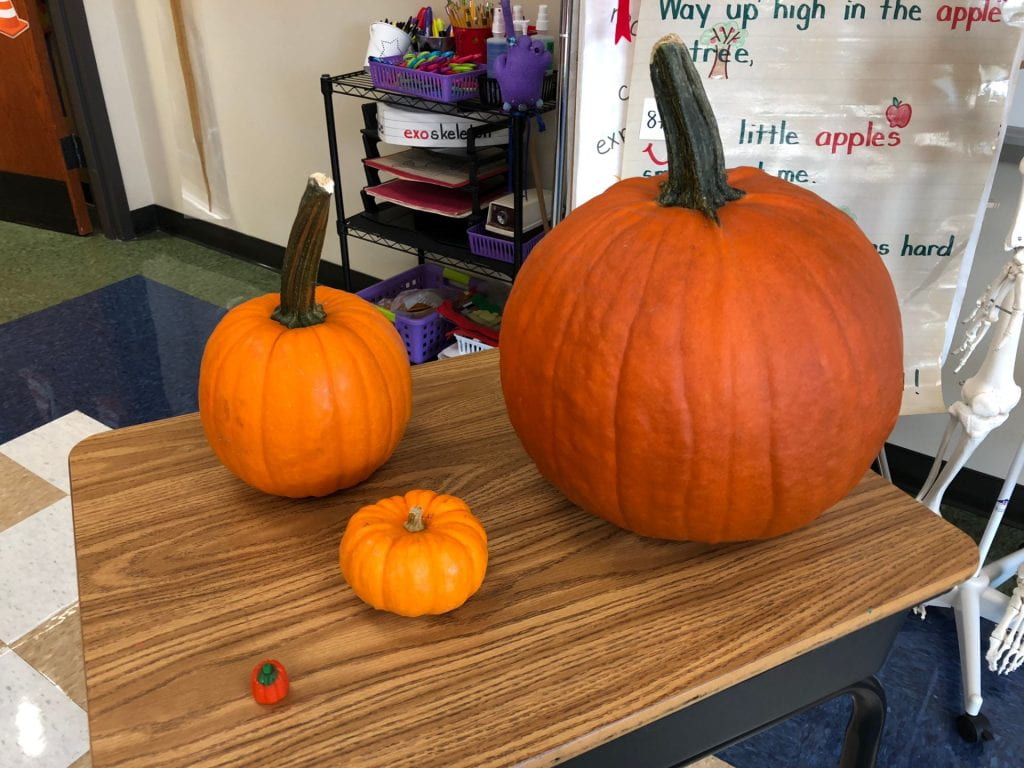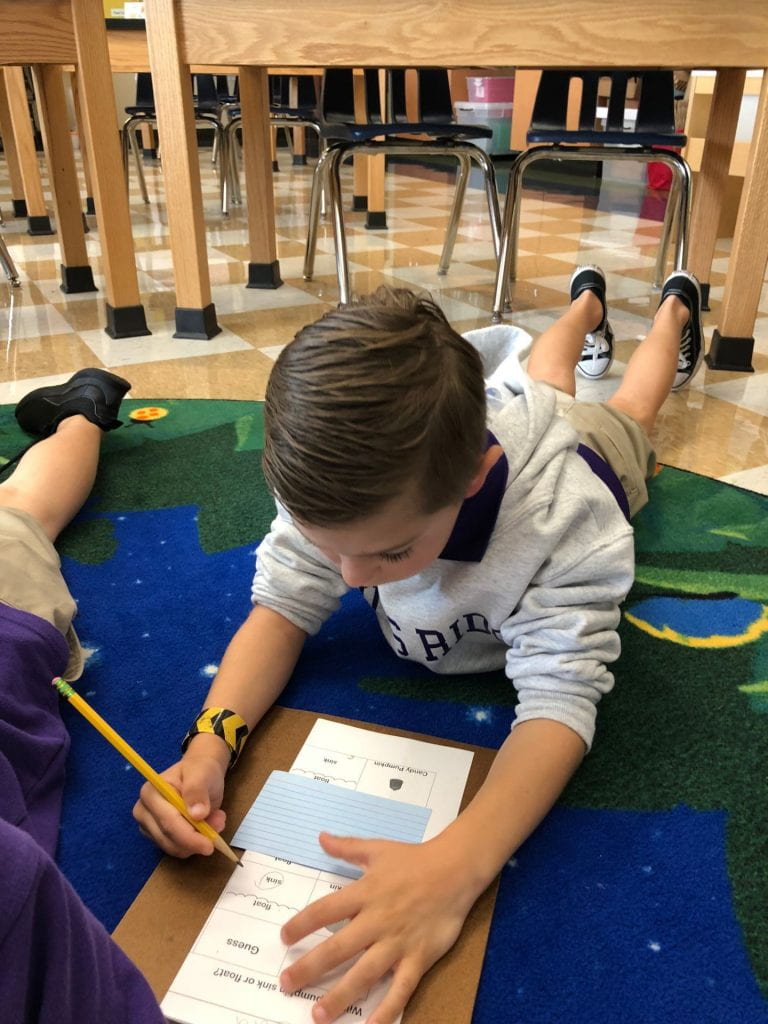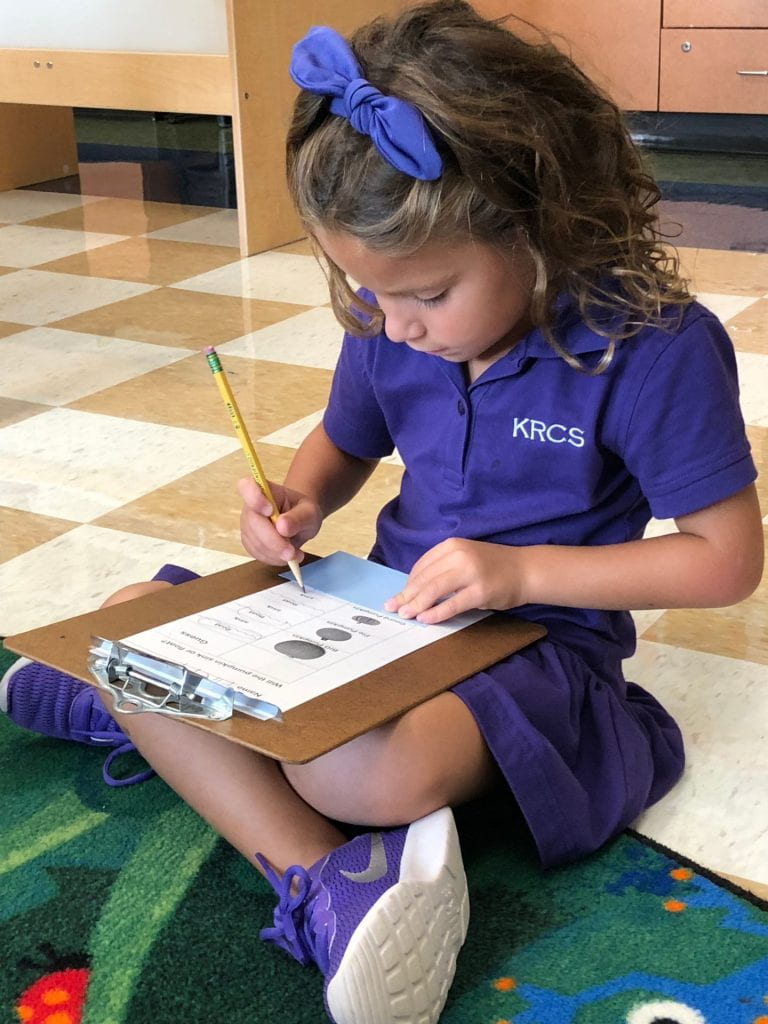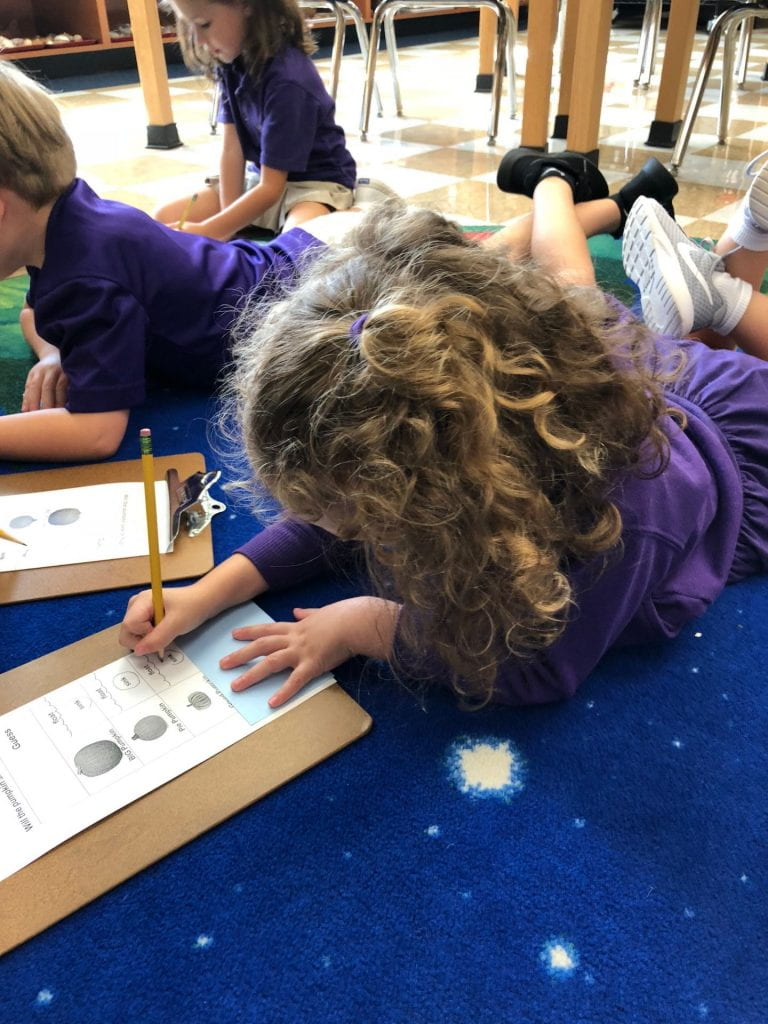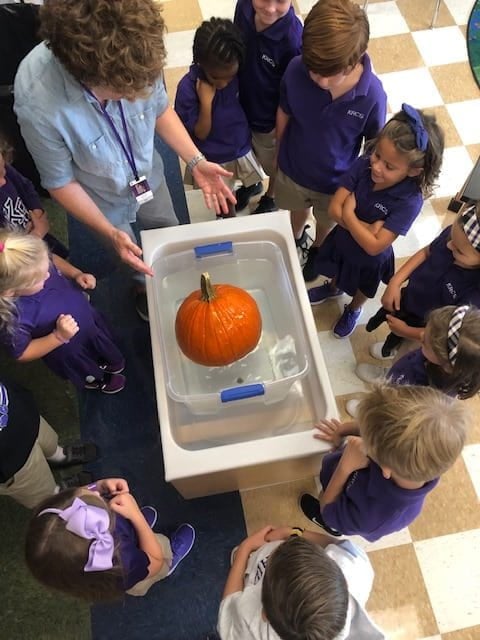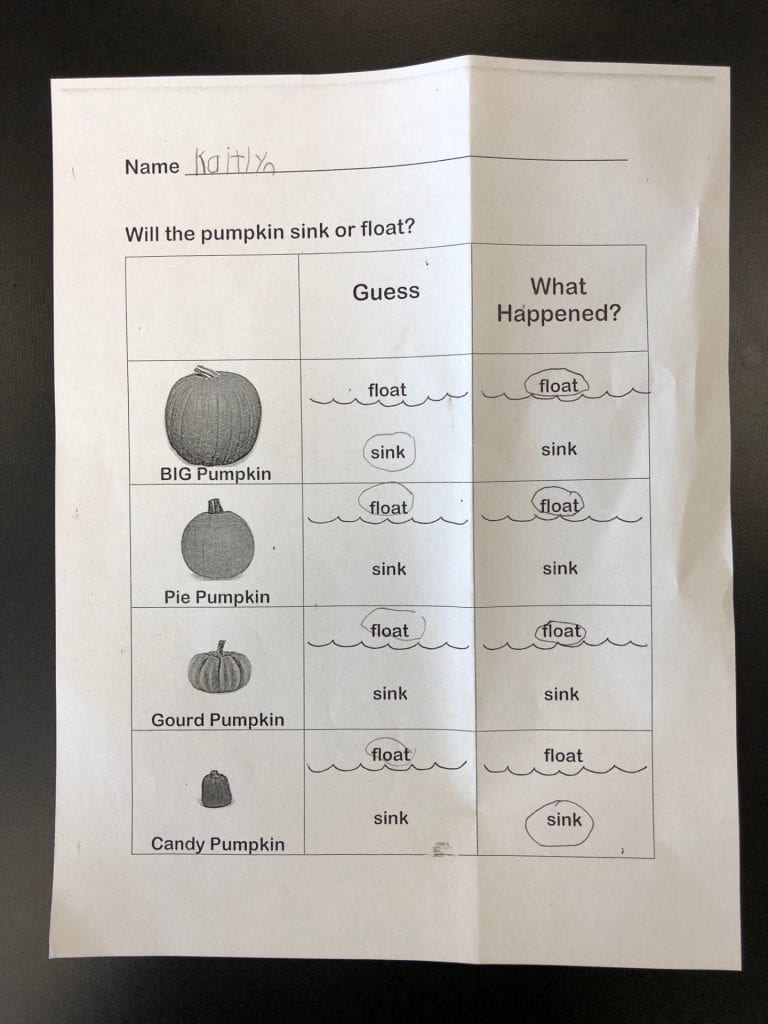Sink and Float Pumpkins
This investigation with my kindergarten scientists is one of my favorites because it turns their thinking upside down. It makes them stop and ponder which is the beginning of all great science.
We began by discussing the question, “Why do some things sink and others float?” Most of my kindergarten students agreed that big, heavy things sink and little, light objects float.
And then this happened . . . The big pumpkin, pie pumpkin, and gourd pumpkins floated, but the little candy pumpkin sank. Hmmmm. Why? Our discussion led us to consider what the inside of the pumpkins look like and how that might affect whether they sink or float. I introduced the concept of density. Inside the large pumpkin, there is a lot of space, but inside the candy pumpkin, the sugar molecules are packed together. This activity will be the basis of other sink and float investigations in the coming months.
New vocabulary: hypothesis and density
We discovered that sometimes results match our hypotheses and at other times, our hypotheses and results don’t match. Learning occurs both times. Repeating an experiment gives validity to your conclusions, so try this again at home. Cut open the pumpkins and look inside.
